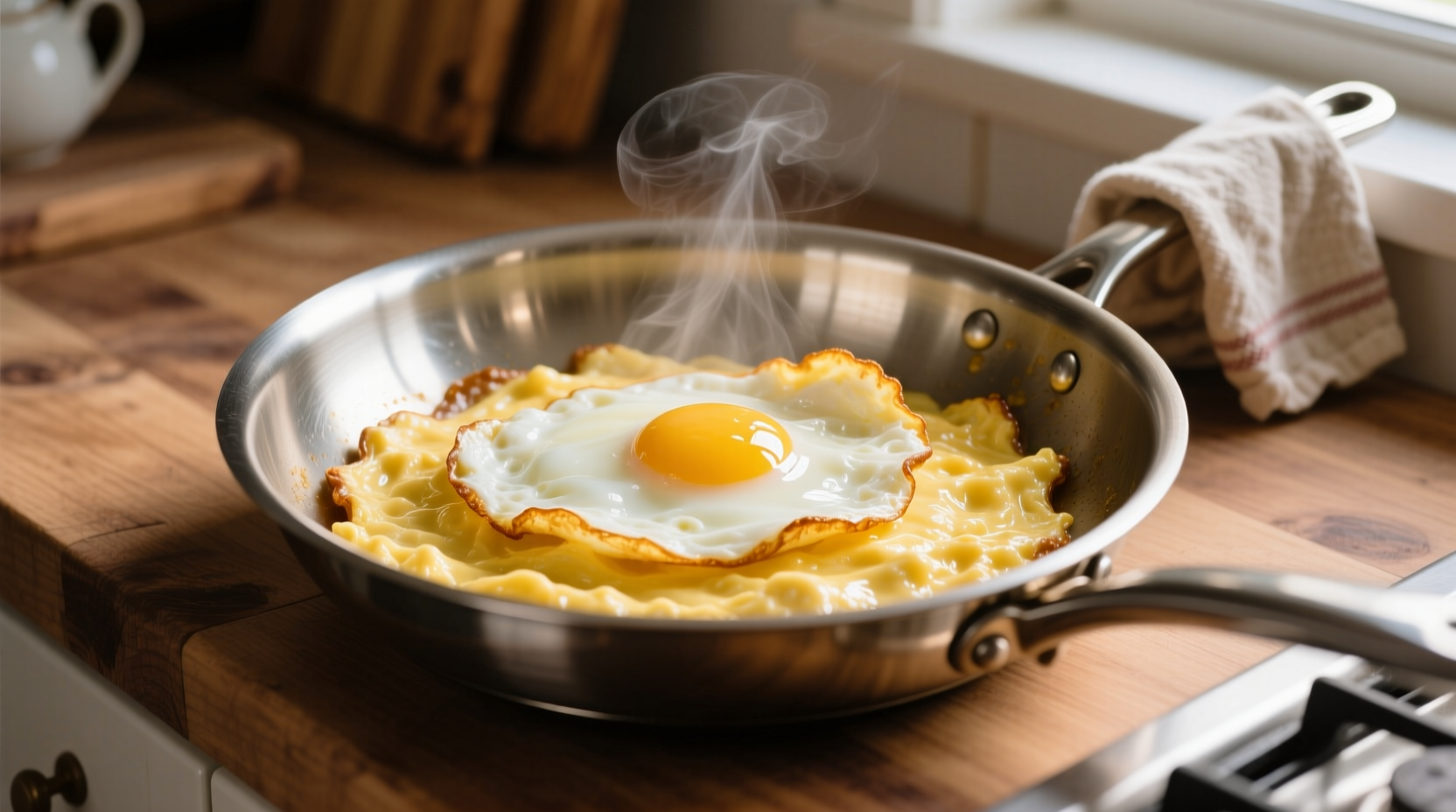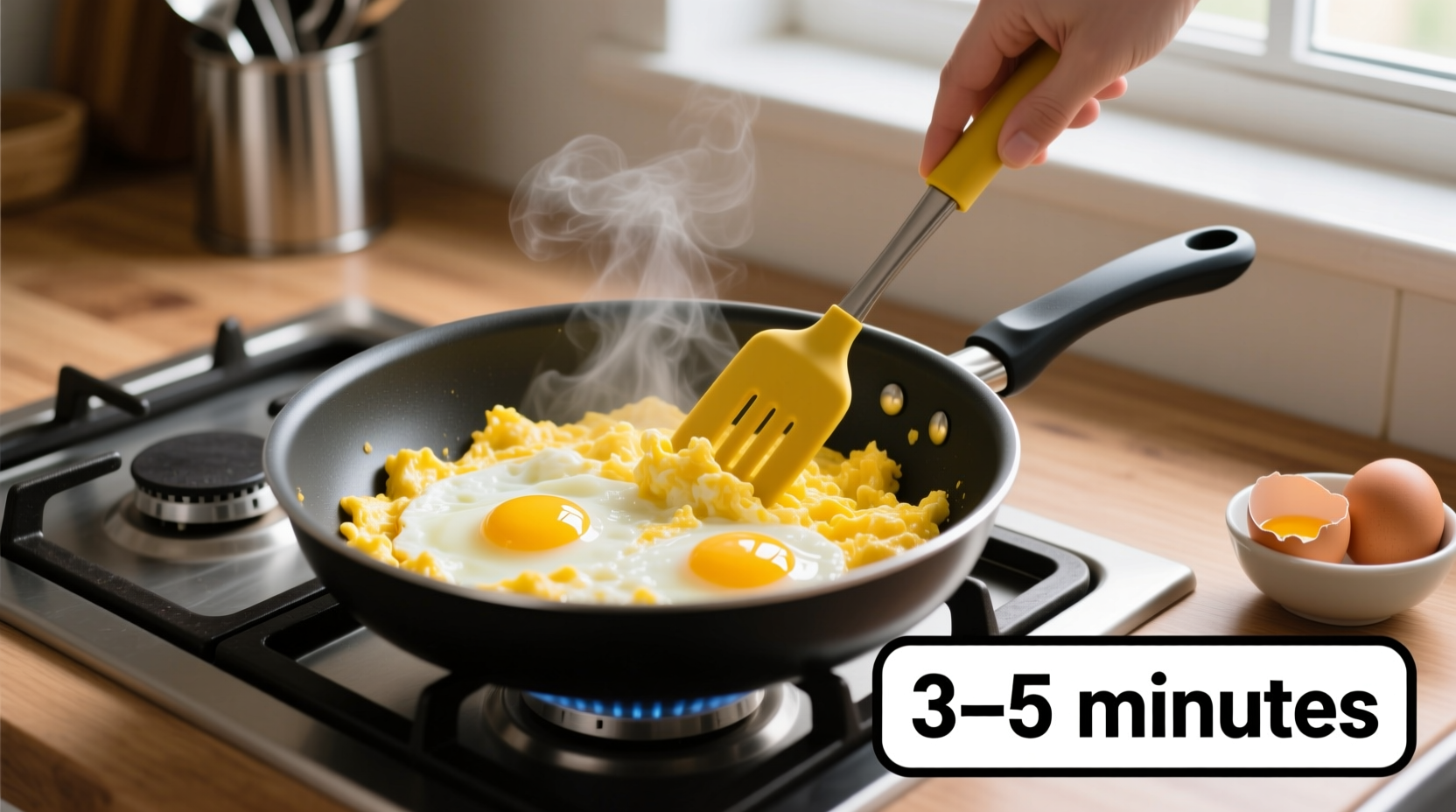Perfect scrambled eggs take 3-5 minutes to cook on medium-low heat. For soft, creamy eggs: 3 minutes. For firmer eggs: 4-5 minutes. Remove from heat just before fully set as carryover cooking continues.
Ever wondered why your scrambled eggs turn out rubbery or undercooked? Getting the timing right is the secret to achieving that dreamy, restaurant-quality texture at home. As someone who's cooked thousands of eggs in professional kitchens and home settings alike, I've discovered that precise timing combined with the right technique transforms this simple dish into something extraordinary.
Why Timing Matters More Than You Think
Scrambled eggs represent one of cooking's most delicate balancing acts. Unlike most dishes where extra cooking time adds depth, eggs move from perfect to ruined in mere seconds. The proteins in eggs begin to coagulate at 140°F (60°C) and fully set around 158°F (71°C). This narrow temperature window explains why timing is absolutely critical.
| Egg Temperature | Protein Reaction | Texture Result |
|---|---|---|
| 140°F (60°C) | Initial coagulation begins | Soft custard-like texture |
| 149°F (65°C) | Albumin proteins set | Creamy but defined curds |
| 158°F (70°C) | All proteins fully coagulated | Firm but still moist |
| 165°F (74°C)+ | Proteins tighten and squeeze out moisture | Rubbery, dry texture |
This temperature timeline, verified by the USDA Food Safety and Inspection Service, explains why removing eggs from heat just before they reach your desired consistency prevents overcooking.
Your Step-by-Step Timing Guide
Follow this precise timeline for perfect scrambled eggs every time. These timing recommendations work for 2-3 eggs cooked in an 8-10 inch non-stick skillet:
Preparation Phase (1-2 minutes)
- Crack and whisk: 30 seconds to 1 minute (creates uniform texture)
- Add seasoning: Pinch of salt before cooking (helps maintain moisture)
- Preheat pan: 1-2 minutes on medium-low heat (critical for even cooking)
Cooking Phase (3-5 minutes)
- 0-60 seconds: Add butter (1 tbsp) to hot pan, let melt and foam slightly
- 60-90 seconds: Pour in eggs, let sit 15 seconds without stirring
- 90-150 seconds: Gentle folding motion every 20-30 seconds (creates large, soft curds)
- 150-180 seconds: Remove from heat when slightly underdone (for soft eggs)
- 180-300 seconds: Continue folding off-heat for firmer texture

Factors That Change Your Cooking Time
Several variables affect how long to cook scrambled eggs. Understanding these helps you adjust timing for perfect results every time:
Pan Type and Size
Non-stick skillets conduct heat evenly but require lower temperatures. Cast iron retains heat longer, meaning you'll need to remove eggs from the pan earlier. Larger pans spread eggs thinner, cooking them faster. For cast iron or stainless steel pans, reduce heat by 25% and remove eggs 30 seconds earlier than the standard timing.
Number of Eggs
More eggs equal longer cooking time, but not proportionally. Three eggs take about 4 minutes while six eggs might need 6-7 minutes. The key is maintaining the proper egg-to-pan ratio—overcrowding slows cooking while too few eggs cook too quickly.
Desired Doneness Level
Your preferred texture dramatically impacts timing:
- Creamy, restaurant-style: 3 minutes total (remove at 2:30)
- Classic home-style: 4 minutes total (remove at 3:30)
- Firm, fully set: 5 minutes total (remove at 4:15)
Visual Cues That Beat the Clock
While timing provides a framework, visual indicators offer the most reliable doneness assessment:
- Surface appearance: Eggs should look mostly set but still slightly glossy
- Curds formation: Soft scrambled eggs show large, custardy curds; firm eggs display smaller, defined curds
- Pan movement: When tilted, eggs should move as a single mass for soft style, or hold shape for firm style
The American Egg Board confirms that visual assessment combined with proper timing yields the most consistent results. Remember that carryover cooking continues for 30-60 seconds after removal from heat.
Avoid These Common Timing Mistakes
Even with perfect timing, these errors can ruin your scrambled eggs:
- High heat cooking: Creates uneven cooking and rubbery texture (takes only 1-2 minutes but ruins quality)
- Over-stirring: Breaks curds too small, releasing moisture and creating scrambled egg "dust"
- Adding dairy too early: Liquids like milk or cream should be added after eggs begin setting (around 90 seconds)
- Ignoring carryover cooking: Removing eggs when they look slightly underdone prevents overcooking
Food Safety Considerations
While timing affects texture, food safety requires eggs to reach proper internal temperature. The USDA recommends cooking eggs until they reach 160°F (71°C). For scrambled eggs, this typically happens around the 3-minute mark when cooked properly. If adding ingredients like cheese or vegetables, ensure the entire mixture reaches this temperature.
Perfect Timing for Special Dietary Needs
Different dietary requirements affect cooking time:
- Vegan alternatives: Tofu scramble requires 5-7 minutes for proper texture development
- Runny yolk enthusiasts: Cook only 2-2.5 minutes for partially set yolks
- Kids' portion sizes: Smaller batches cook 30-60 seconds faster due to higher surface-to-volume ratio
Understanding these timing variations transforms scrambled eggs from a simple breakfast into a customizable culinary experience. Whether you prefer your eggs soft and creamy or firm and traditional, mastering these timeframes ensures perfect results every time.











 浙公网安备
33010002000092号
浙公网安备
33010002000092号 浙B2-20120091-4
浙B2-20120091-4